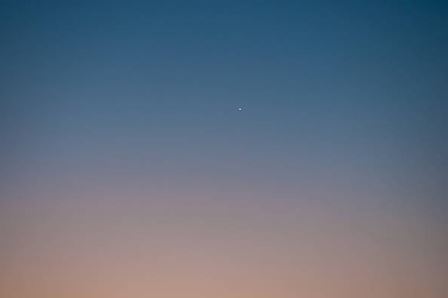When darkness falls, it means we are about to go to sleep. The time of darkness varies from season to season, so this article will explore how long after sunset does it get dark?
Table of Contents
What Time Does It Get Dark?
There are two factors that determine the answer to that question:
- Your latitude – the closer you are to the equator, the quicker it gets dark after sunset
- The Season – In summer it takes longer to get dark than in winter (and may not get truly dark at all)
The Impact of Latitude on Time to Darkness After Sunset
At the equator, the sun seems to rise and set in a straight line. East is where it rises, and it rises straight up (i.e. the zenith) at midday and sets straight down in the west.
The horizon appears to be parallel to where the sun appears to set. It sinks past 6°, 12°, and 18° below the horizon much faster than it does nearer to the poles.
The sun travels through the sky at a more leisurely angle closer to the poles. It rises near the east, does not go straight up, does not get as high as the zenith at midday, and sets near the west.
Because of this flatter angle, it takes longer for the sun to set at 6 degrees, 12 degrees, and 18 degrees below the horizon, respectively. As a result, it takes longer for it to get dark.
This can be hard to visualize (there’s a great explanation here) so it’s simpler to show you with a specific example.
The Impact of Season on Time to Darkness After Sunset
As you’ve just seen, it takes longer for it to get dark on any given day the farther you are from the equator.
The closer we get to summer, though, the longer it takes for it to get dark wherever you are. The time difference for the US mainland is negligible, only a few minutes.
The biggest effect of summer darkness is that, depending on how far north you live, there may be times when there isn’t even a true “night” at all.
Consider Alaska as an illustration. The sun never sinks lower than 6 degrees below the horizon for the majority of June. So you can read outside all night long without a second source of light since it never gets dark after civil twilight!
You probably already know that in the summer, the north pole has 24 hours of daylight, but in the contiguous states, the effect of the summer is not as noticeable.
You’ll experience true, dark “night” every single day of the year unless you reside in the country’s far north (within about 15 miles of the Canadian border).
On the longest day of the year, for instance, Seattle, the largest city in the continental US, has two hours of nighttime.
However, it’s a different story in Bellingham, in the northwest corner of Washington State, just a few miles north. They have around two weeks in mid-June where astronomical twilight doesn’t end before the sun begins to rise again, there is no ‘night’.

Why Get Darker In The Winter?
Our planet is a part of an orbiting system that circles the sun, as you might recall from science class. We get the heat and light we require from this star. However, Earth is on a tilted axis meaning that a portion will be titled towards the sun, while a portion will be titled away from it.
This means that during various seasons, the Earth receives varying amounts of sunlight. Because of this, the Northern Hemisphere is characterized by longer summer days and more sunlight. In the winter, it is the opposite. The fact that there are fewer contact hours with the sun also contributes to the colder temperature.
For those in the Southern Hemisphere, this functions similarly (although at different times). On the other hand, days and nights are generally equal for people who live near the equator (the midpoint of the sphere).
How Long Does It Take To Get Dark After Sunset?
It’s possible to notice that the sunset doesn’t immediately get dark. This is related to our planet’s spherical shape once more. The sun is still shining on the atmosphere above the surface of the Earth even though it has set on our horizon. This has to do with how light scatters when it interacts with different gas molecules.
Twilight is the term used to describe this time of the night sky. There are three stages of twilight:
- Civil Twilight. It’s still light enough to see at this point.
- Nautical Twilight. At this point, objects resemble silhouettes more. The sky is now filled with stars and constellations.
- Twilight of the stars. What we would call night is this. Time is ideal for viewing space objects because it is truly dark.
Our environment goes through these three stages in roughly 70 to 100 minutes, according to experts. Hence, an hour and a half after sunset, it becomes truly dark.
Important Dates Coming Up in March
Important occasions in March will have an impact on how we determine when it gets dark.
Daylight Savings
To make the most of natural light, daylight saving time was created. Clocks “go back” for the winter months and “go forward” for the summer months. At 2 am on March 14th, 2021, we “lose an hour of time” signifying our transition into longer days in the Northern Hemisphere: The time it turns dark will continue to advance after this date.
March Equinox
The beginning of spring is heralded by the March Equinox, which occurs on the twentieth of the month. At this time, the sun moves from the south to the north as it crosses the celestial equator. Additionally, it is the day and night are essentially the same lengths everywhere on Earth on this day.
Do you know more about what time it gets dark?
